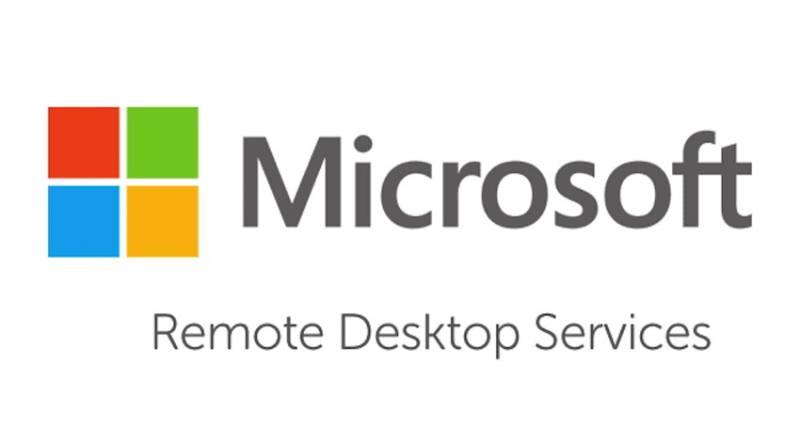Navigating the Costs of Microsoft RDS: Strategies for Smarter Spending

Microsoft Remote Desktop Services (RDS) is a powerful tool that facilitates remote access for teams. RDS offers deployment flexibility, efficiency, and extensibility—all delivered through a variety of deployment options. However, managing its costs can be a challenge.
Microsoft RDS can be very expensive. And, in the dynamic world of IT where every click and connection comes at a cost, finding ways to optimize your IT expenses is crucial.
Fear not, fellow tech enthusiasts! In this post, we’ll unravel the mystery of Microsoft RDS implementation and guide you through some savvy strategies for smarter spending.
Understanding the RDS Landscape
Before we dive into RDS cost-cutting strategies, let's first understand the lay of the land.
Microsoft RDS operates on a client-server model, allowing users to access applications and data remotely. It's like having your digital workspace accessible from anywhere - a concept that gained immense popularity, especially in our post-2020 era.
The Price Tag: What You're Dealing With
Microsoft RDS pricing involves various components, from server and client access licenses to the underlying infrastructure costs.
The challenge is to optimize each aspect without sacrificing the quality of service.

Strategies to Navigate RDS Costs
Now, let's get down to business – how do you navigate RDS costs and ensure that every dollar spent on RDS is a dollar well spent?
Here are some effective down-to-earth strategies to optimize your RDS costs:
1. Right-Size Your Infrastructure
Think of your IT infrastructure as a wardrobe. You wouldn't wear an oversized coat or squeeze into something too tight.
Similarly, right-sizing your RDS infrastructure ensures that you're paying for exactly what you need. Don't over-provision servers or licenses. Instead, tailor them to fit your current demands.
2. Embrace Scalability
Scalability is the unsung hero of cost management. As your organization grows, your IT requirements evolve.
Ensure that your RDS deployment can scale effortlessly to accommodate increased workloads. This way, you only pay for the resources you're using.
3. Monitor, Analyze, Optimize
It's not just a catchy slogan. Regularly monitor and analyze your RDS usage to identify patterns and potential areas of improvement.
Leverage monitoring tools to gain insights into resource utilization, user activity, and peak usage times. Armed with this information, you can make informed decisions to optimize your setup continually.
4. Leverage Azure Spot Instances
If you're utilizing Azure for your RDS deployment, consider using Azure Spot Instances for non-critical workloads. These instances provide a significant cost reduction compared to regular instances. Just be mindful of their preemptible nature – they may be interrupted if capacity is needed elsewhere.
The Art of Licensing
Ah, licensing – the puzzle piece that can make or break your RDS budget. Let's unravel the complexities:
1. Choose the Right License Model
Microsoft offers various licensing models for RDS, such as User CALs (Client Access Licenses) and Device CALs. Carefully choose the model that aligns with your organization's structure and usage patterns. This ensures you're not paying for licenses that sit idle.
2. Embrace Subscription-Based Licensing
Consider moving to a subscription-based licensing model if your organization's requirements allow. This can provide cost predictability and flexibility, particularly in fluctuating user scenarios.
3. Software Assurance for the Win
Investing in Software Assurance might seem like an additional cost, but it can be a game-changer. It includes benefits like version upgrades, home use programs, and technical support, offering long-term value that outweighs the initial expense.
User Management: Where People and Tech Collide
Now, let's talk about the human side of RDS – user management. After all, what good is technology if it doesn't serve the people using it?
1. Educate Your Users
An informed user is an empowered user. Educate your team about responsible RDS usage, emphasizing the impact of resource-heavy activities. This not only fosters a culture of responsibility but can significantly reduce unnecessary costs.
2. Implement Access Controls
Not everyone needs access to every nook and cranny of your RDS. Implementing robust access controls ensures that users have access only to the resources essential for their roles, preventing unnecessary strain on your infrastructure.
Road Ahead: Future-Proofing Your RDS Strategy
As we wrap up our journey through the RDS cost maze, it's crucial to look ahead and future-proof your strategy.
Technology evolves, and so should your approach to managing costs:
1. Stay Informed About Updates and Changes
Microsoft, like any tech giant, regularly updates its services. Stay in the loop about changes to RDS features, pricing, and licensing to adapt your strategy accordingly.
2. Embrace Automation Where Possible
Automation isn't just for the tech elite; it's a friend to all cost-conscious IT administrators. Explore automation tools that can handle routine tasks, reducing the burden on your team and potentially cutting costs in the long run.
Conclusion: Navigating the RDS Seas with Confidence
In the ever-expanding sea of IT expenses, mastering the art of navigating Microsoft RDS costs is a journey worth taking.
By right-sizing your infrastructure, optimizing licensing, and embracing user management strategies, you'll save dollars and also create a more efficient and user-friendly environment.
Remember, it's not about cutting corners; it's about spending wisely. So, set sail with confidence, fellow tech adventurer, and may your RDS journey be both cost-effective and rewarding!



















